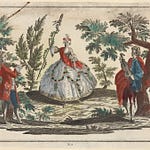Originally published on November 13, 2023 (Episode 342)
Introduction
From its opening in 1822, the Fulton Market was an essential part of life in old New York, selling vegetables from Long Island, fruit from Cuba, lobsters from Maine, chickens from Pennsylvania, and fish and oysters from New York Harbor itself. Over time it became known as the Fulton Fish Market, dominated by wholesale dealers who sourced from across the globe.
“What Chicago became for beef, New York became for fish,” writes historian Jonathan Rees. His new book, The Fulton Fish Market: A History (Columbia, 2023), is more than the story of a place: it is a history of the intersection of community, politics, economy, nature, and culture on the New York waterfront.
About the Guest
Jonathan Rees is Professor of History at Colorado State University–Pueblo. He has previously written on refrigeration and food purity. This is his third appearance on Historically Thinking.
For Further Investigation
Jonathan Rees, The Fulton Fish Market: A History (Columbia, 2023)
Jonathan Rees, Refrigeration Nation: A History of Ice, Appliances, and Enterprise in America (Hopkins, 2016)
Joseph Mitchell, Up in the Old Hotel (Vintage, 2003)
Related Episodes
Jonathan Rees on the refrigeration
For related issues, listen to “Street Food”
💬 Listen & Discuss
What can the rise and fall of a fish market teach us about food systems, cities, and culture? How does a place like Fulton Market link together global trade and local community? Share it with a New Yorker, or with someone who wants to be one.











